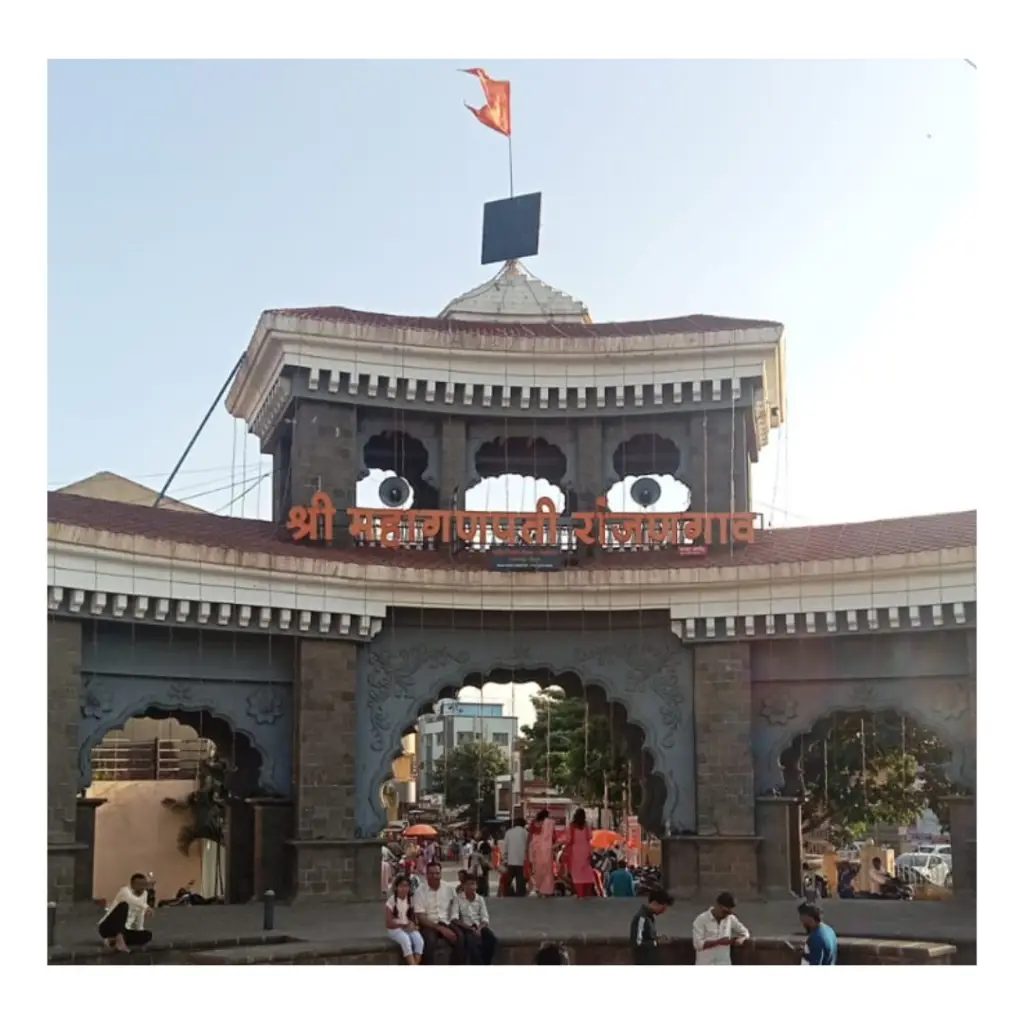
Ashtavinayak Darshan Yatra
The Ashtavinayak Darshan Yatra is a notable pilgrimage in Hindu culture, renowned for its spiritual depth and devotion to Lord Ganesha, the deity of wisdom, prosperity, and good fortune. This yatra translates to ‘the journey to the eight Ganesha temples’ located in Maharashtra, India, each representing distinct aspects and forms of Ganesha. The significance of this pilgrimage extends beyond mere tourism; it embodies a deep-rooted faith and the commitment of devotees seeking blessings and guidance from the revered deity.
At the heart of the Ashtavinayak Yatra are the eight temples, collectively known as Ashtavinayaka, which are situated along a circuit from Mumbai. Each temple, including the famed ones like Siddhivinayak and Ganpatipule, exhibits unique architectural styles and historical narratives that contribute to its spiritual value. The journey to these temples is often marked by rituals, prayers, and reflective moments, allowing devotees to immerse themselves in a profound spiritual experience. Furthermore, the pilgrimage is considered a path to attaining inner peace and clarity, reinforcing the belief in Ganesha as the remover of obstacles.
The popularity of the Ashtavinayak Darshan Yatra among devotees is particularly noteworthy, as many commence their pilgrimage from Mumbai, one of India’s largest metropolitan cities, creating a blend of urban existence with spiritual exploration. Participants often travel in groups or families, experiencing a sense of community and shared faith throughout the journey. In addition, numerous travel agencies offer organized tours, making it accessible for both the devout and those seeking a cultural adventure.
This yatra not only fosters spiritual connections but also promotes the rich cultural heritage of Maharashtra, intertwining tradition with the modern spirit of exploration. As we delve deeper into the specifics of each temple in the subsequent sections, the interconnectedness of faith, culture, and spirituality inherent in the Ashtavinayak Darshan Yatra will become increasingly evident.
The Eight Ashtavinayak Temples: Locations and Significance
The Ashtavinayak Darshan Yatra encompasses eight revered temples dedicated to Lord Ganesha, each with its unique charm and spiritual essence. This pilgrimage, rooted in the spiritual fabric of Maharashtra, highlights the distinctiveness of each temple, making them significant landmarks for devotees and tourists alike.
Firstly, we have the Ganesh Temple at Siddhatek, located in Ahmednagar district. This temple is noted for the deity’s idol, which is facing the south and is believed to be the place where Lord Ganesha eliminated the demon named Sindhu. The temple’s architecture showcases intricate carvings and has a rich history associated with the saint, Siddhivinayak.
Next, the Ganesh Temple at Moreshwar, situated in Morgaon, stands as one of the most historically significant temples. It is revered as the first temple in the Ashtavinayak circuit, featuring a large black idol of Ganesha with a specific significance tied to the lunar calendar.
Moving on, the Talyatla Ganapati, located in the village of Pali, features a striking three-foot tall idol adorned with a silver crown and nose ring. The folklore behind this temple speaks of the position of the idol, which is considered to bring good fortune and success to devotees.
The Ganesh Temple at Ballaleshwar is found in the village of Pen, and it is celebrated for its rich narrative, discussing the devotion of a young boy named Ballal, who encouraged Ganesha’s worship. Its architectural design is exemplary of traditional Indian temple architecture.
There is also the Ganesh Temple at Varadvinayak in Mahad, noted for the lush landscape surrounding it. Its mythological tales revolve around the protection it offers to devotees who seek guidance through challenging obstacles.
In the vicinity of Ashtavinayak Darshan, the Chintamani Temple in Theur, signals the transition into a realm of contemplation as it symbolizes the essence of peace and tranquility. The deity here has a reputation for granting wisdom and clarity.
The pilgrimage continues to the Girijatmaj Ganapati in Lenyadri, a unique temple carved into a rock, showcasing remarkable architecture and scenic beauty. The journey here is spiritual, as visiting the temple requires a climb of 300 steps, which many consider a spiritual endeavor.
Finally, the Vighnaharta Ganapati in Ozar is famed for its magnificent idol, sitting regally and adorned with a plethora of offerings from devotees. This temple is synonymous with the establishment and removal of obstacles, reigniting faith and hope in the visitors’ hearts.
Each Ashtavinayak temple not only encapsulates divine reverence but also reflects historical narratives, architectural brilliance, and local legends, making them integral to the spiritual journey undertaken by many devotees.
How to Cover the Eight Ganpati Temples from Mumbai
Embarking on the Ashtavinayak Darshan Yatra is a transformative experience for devotees seeking to visit the eight revered Ganpati temples surrounding Mumbai. The journey requires careful planning to ensure a smooth and fulfilling pilgrimage. The primary modes of transportation available include private cars, buses, and organized group tours, each offering its unique advantages.
For a personalized experience, many travelers opt for a private car. This option provides flexibility in choosing departure times and stops along the way for meals or sightseeing. The drive to the temples typically takes around 8 to 10 hours, depending on traffic conditions. The suggested itinerary starts with morning departure from Mumbai, heading towards Morgaon, the first temple. From Morgaon, proceed to Siddhatek, and then to Lenyadri, making your way through scenic routes that enhance the spiritual journey.
For those preferring a more economical option, state-run or private buses provide a comfortable way to travel. The Maharashtra State Transport Corporation (MSRTC) offers timely services to key locations, and it is advisable to book tickets in advance to secure seats. The bus journey can take longer, around 12 to 14 hours, but it allows for fellowship with fellow pilgrims. You can book Private and Group tours with Citycabz. one of the best travel tour agency in Mumbai, offering convenience with guided itineraries, which can simplify logistics significantly.
For booking ashta vinayaka darshan yatra simply visit Citycabz website www.citycabz.com or call customer support at +91 93720 93020.
Our experienced teams will guide you through journey, with our fleets of cars, sedan 4+1, suv 6+1, innova crysta, innova hycross, 12,14,17,20 & 25 seater tempo traveller, mini bus and 40,44,49 Seater Bus available on rent. Our verified and experienced chauffeur/driver will make your pilgrimage experience memorable & beautiful.
Accommodation options near the temples vary from budget hotels to mid-range stays, ensuring comfort after a day of travel. It is recommended to book accommodations in advance, particularly during peak pilgrimage seasons. In addition, consider local transport options for intracity travel between the temples, as many are not within walking distance. Utilizing local taxis or auto-rickshaws can enhance the journey, making the experience of visiting each Ganpati temple both enriching and manageable.
Best Time to Visit: Seasons and Festivals
The Ashtavinayak Darshan Yatra, a cherished pilgrimage for devotees of Lord Ganesha, presents an opportunity to explore eight revered temples in and around Maharashtra. Choosing the best time to embark on this spiritual journey is crucial to enhance both the experience and enjoyment. The region experiences a tropical monsoon climate, divided into three primary seasons: summer, monsoon, and winter.
Summer, from March to June, can be quite hot and humid, with temperatures often exceeding 35°C (95°F). While some pilgrims may choose this season for the quieter atmosphere, those looking for a comfortable experience are advised to avoid the peak summer months. The monsoon season, which lasts from June to September, brings refreshing rain, but it can disrupt travel plans due to potential flooding and road conditions. However, the lush greenery during this time offers a scenic backdrop for the temples.
The winter months, from October to February, are generally considered the best time for the Ashtavinayak Darshan Yatra. With cooler temperatures ranging from 15°C to 28°C (59°F to 82°F), this season allows for pleasant exploration of the temples without the discomfort of extreme heat or heavy rainfall. January, in particular, is notable for the festival of Ganesh Jayanti, marking the birth of Lord Ganesha, which adds a festive atmosphere in the temples.
Additionally, the Ganesh Chaturthi festival in late summer usually falls in August or September, celebrating the arrival of Lord Ganesha. This period is characterized by vibrant celebrations, music, and decorations, but it can also lead to crowded temples, as many devotees gather for worship. Therefore, visitors looking to experience the zeal of the festival must prepare for large crowds. Ultimately, the optimal time for the Ashtavinayak Darshan Yatra aligns with the winter months, allowing travelers to enjoy a more serene and spiritually enriching pilgrimage experience.
